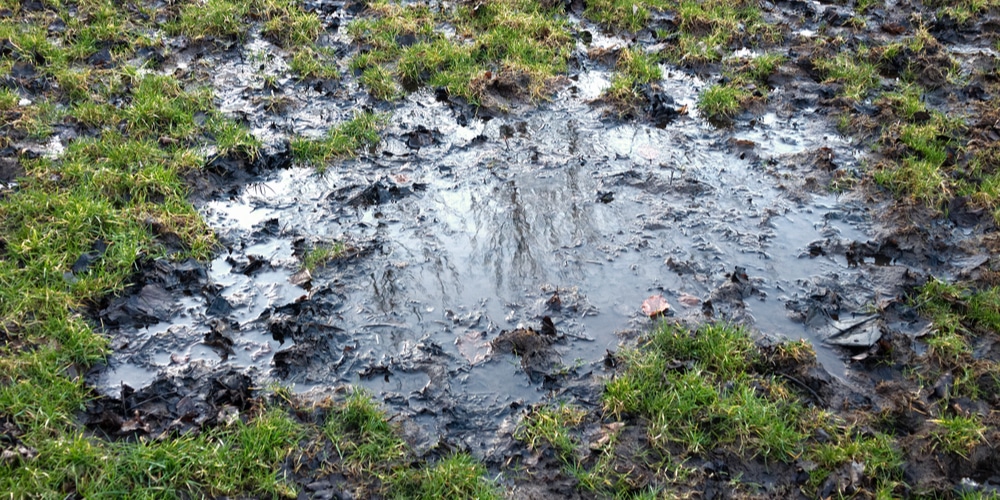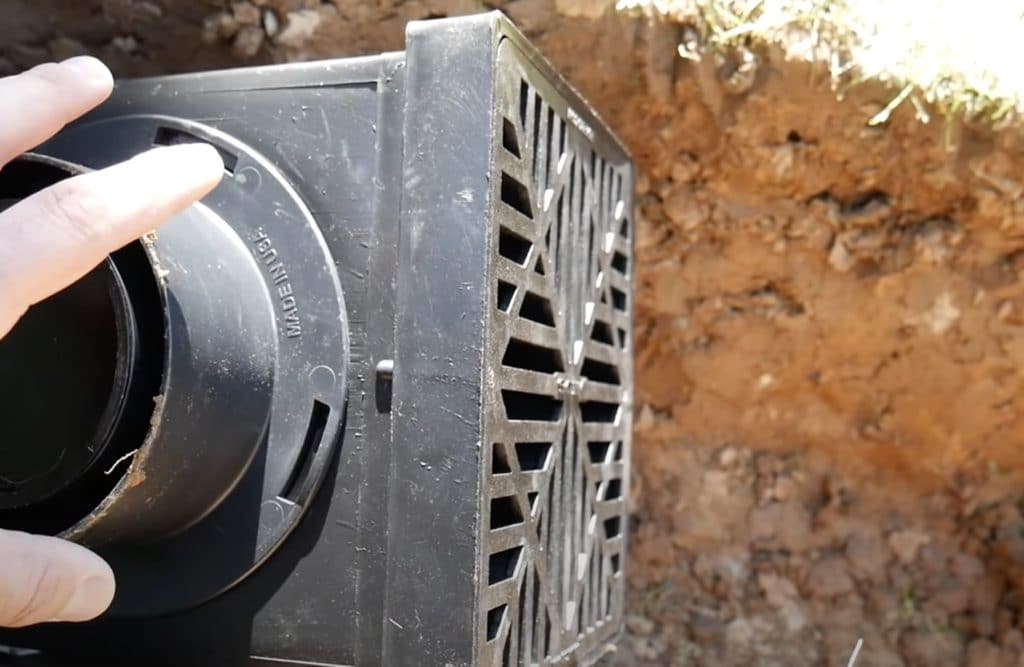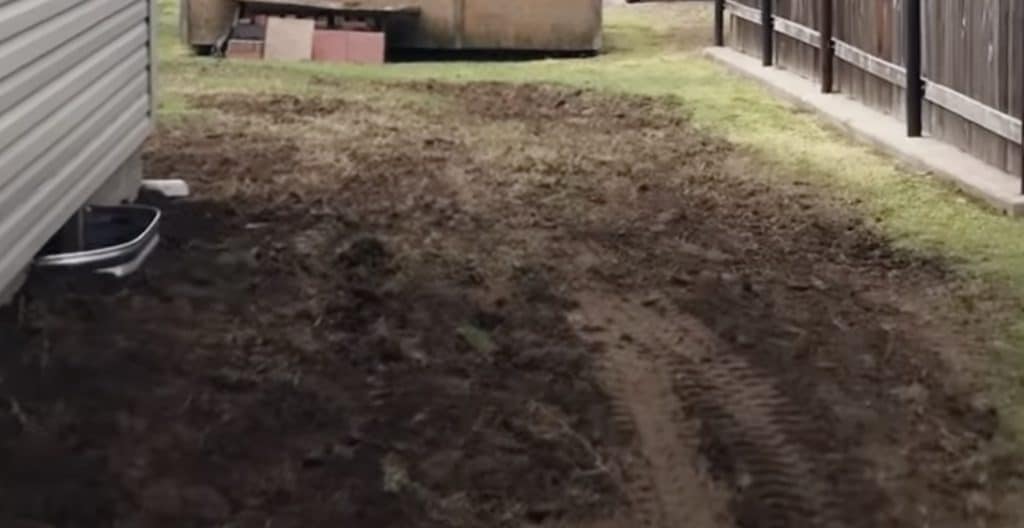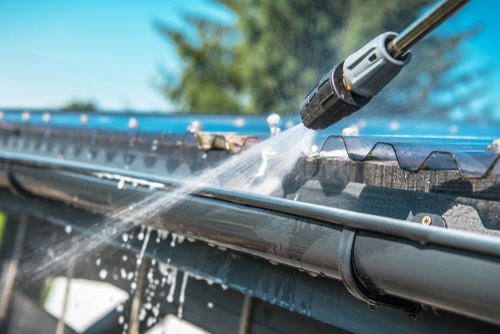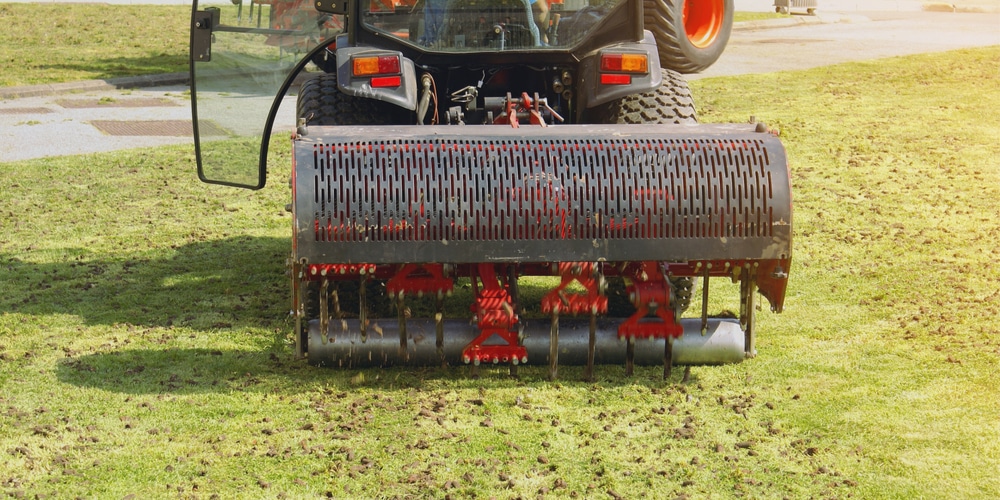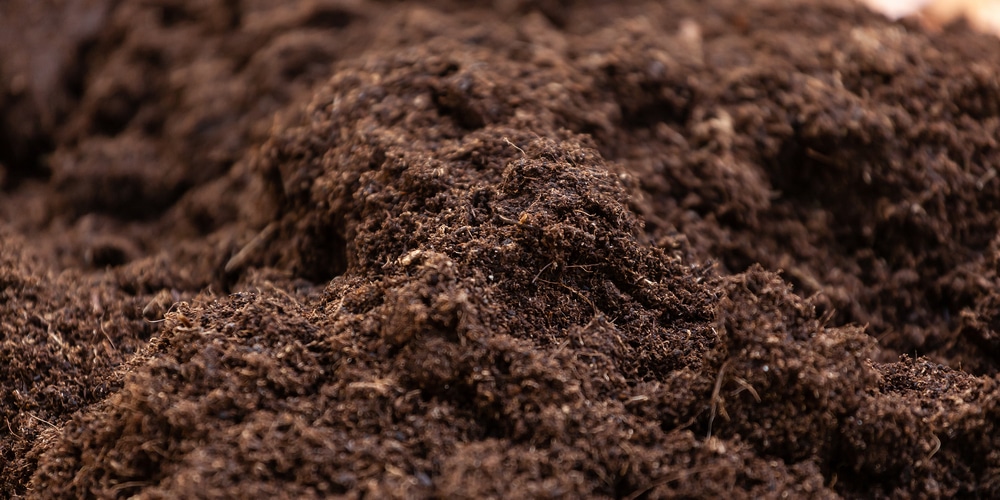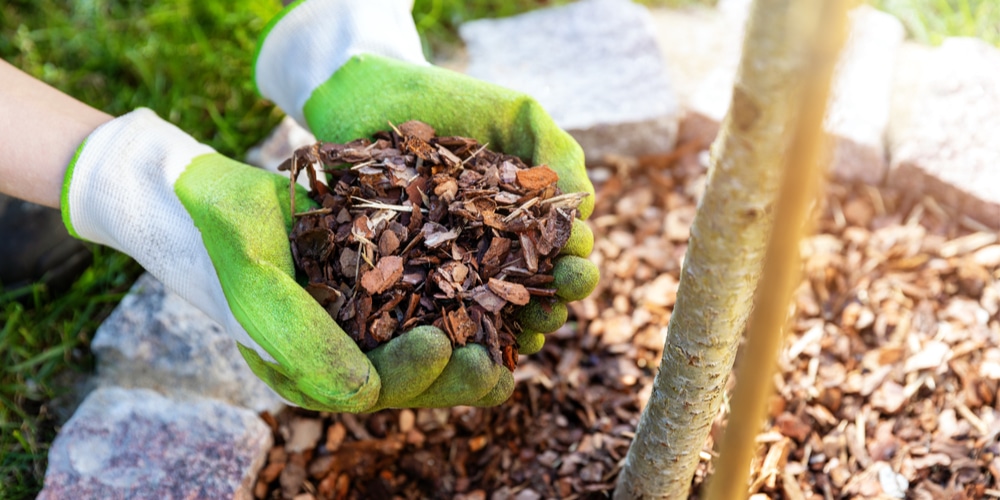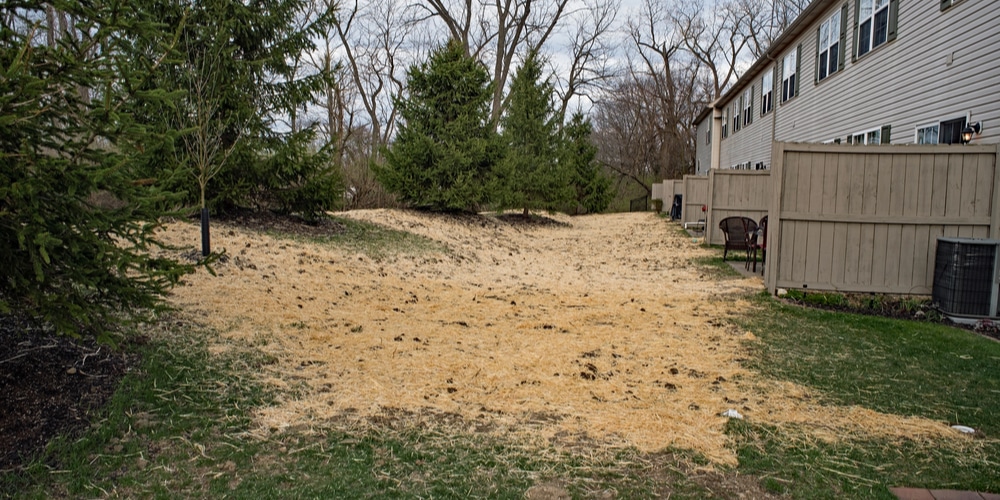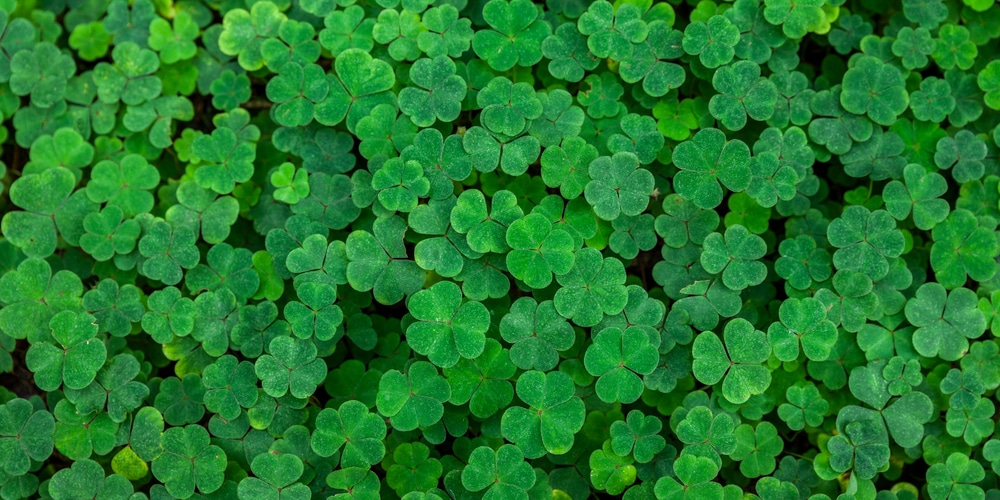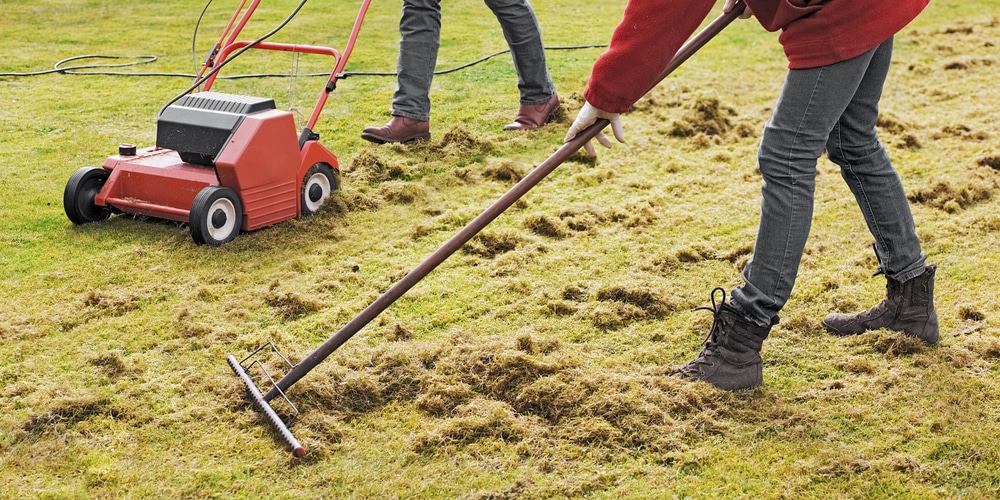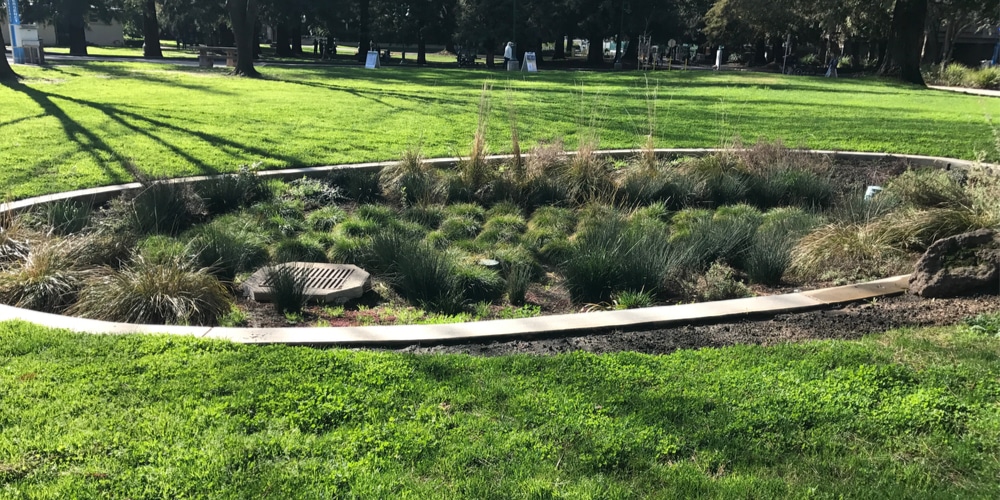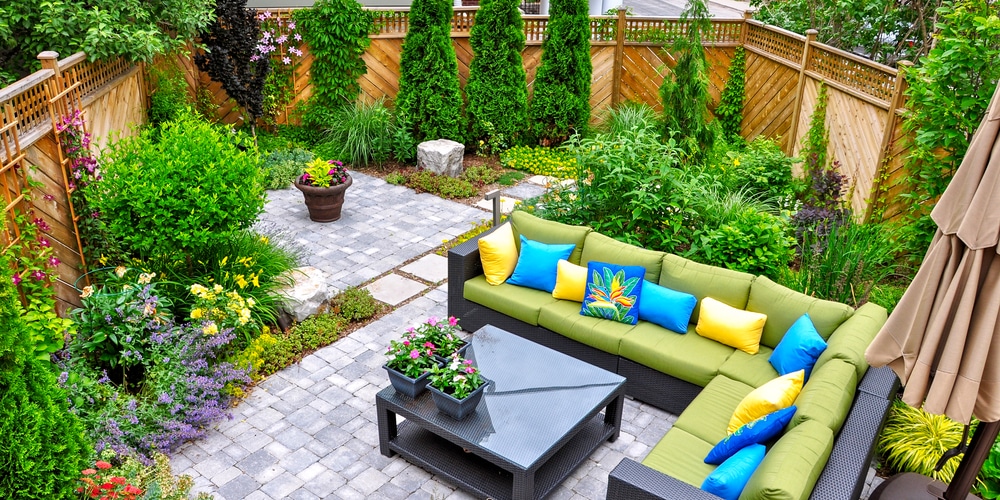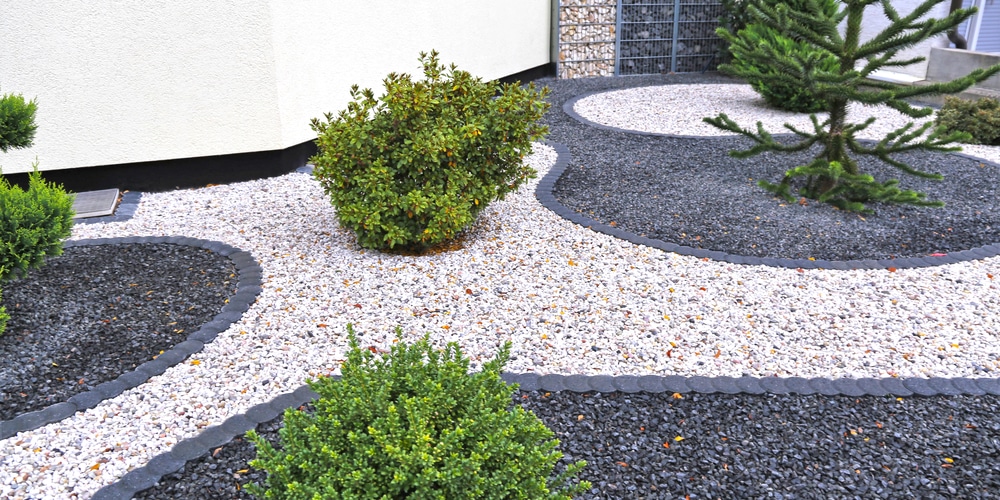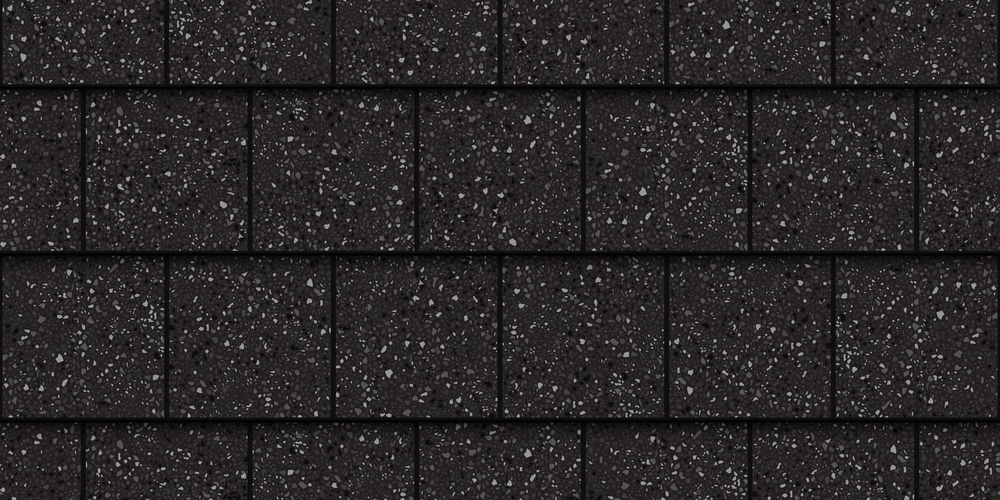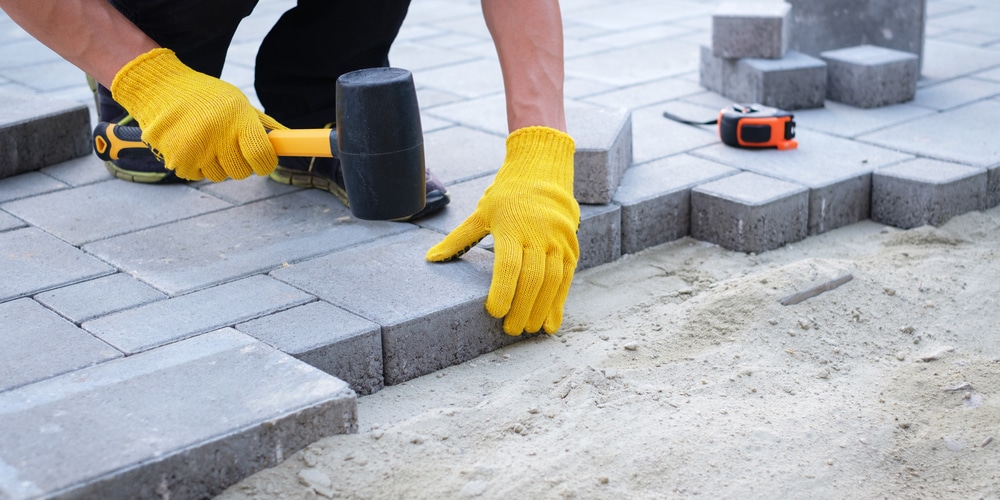It can be annoying and inconvenient to have a yard that’s wet and muddy, especially if you have children or a dog. If you’re sick of mud being traipsed inside your home or often find muddy paw prints on your carpet, it’s time to take action. Grasses growing in muddy or waterlogged yards will be more prone to fungus development and disease. In the worst case, grass will wither and die. This article will tell you how to fix a waterlogged and muddy yard.
Is your yard often wet and muddy? Do you struggle to get grass and plants to grow due to waterlogging? Have you noticed puddles that always seem to be in certain areas? Having a wet, muddy and waterlogged yard is a sign that you have a drainage problem.
Common causes of wet and muddy yards
If your lawn is muddy and your yard always seems waterlogged, it’s a good idea to consider your soil’s drainage and condition. You may need to make slight changes to your landscaping and soil type. Before attempting to fix a soggy and muddy yard, it’s a wise idea to assess why your lawn is saturated all the time. Here are some of the most common reasons yards become waterlogged:
1. Poor drainage
Generally, when a yard becomes waterlogged, it’s due to poor soil drainage. Often water from rain, irrigation, or gutters will run onto a lawn and create puddles. It’s a good idea to see whether your gutters are clear from debris and working effectively. Rainwater should be able to run through your gutters and down the drain rather than flooding your yard.
2. Dogs running around
If your yard is moist and you have a dog running around, muddy trails will be created in your yard. A muddy yard created by a dog is more straightforward to fix than if the problem is caused by flooding. You may like to put pine chips down in muddy areas to stop the dogs from spreading mud around or carrying it into your home.
3. Rising water levels
If you reside in a waterside location, your yard may become wetter at certain times of the year due to rising water levels. This is common in yards that are by the sea or near a river or lake. If rising water levels cause the problem, it can be challenging to sort out. You may need to call in professionals to help.
4. A sloped yard
If you have a sloping yard, the water may be collecting in one area, causing a muddy puddle. Water often collects in lower spots, and sometimes the lawn curves towards the center, making the middle of the yard waterlogged. If this is the case, you may be able to add extra soil and landscape your yard to level the ground and improve drainage.
5. Compacted soil
When the soil becomes very compact, water won’t be able to penetrate it and drain away. Puddles will form on the surface of the soil when it rains or if you water your lawn. The solution to this problem is to aerate your lawn so that the soil loosens up and the water can drain away correctly.
How to Fix a Waterlogged and Muddy Yard
Once you’ve identified why your yards become muddy, you can take steps to improve its condition. There are some temporary solutions such as laying wood chips and other more permanent ones like installing drains.
Here’s how to fix a muddy yard, reduce waterlogging, and allow your lawn to grow healthily.
1. Build a french drain or dig a trench
If your lawn is very waterlogged and you’re looking for a permanent solution, you may like to dig a drainage ditch or trench. If you have a sewerage system, drain or gutter in your yard, you can dig a channel to transport the water to the drain. This will help to remove excess water from your yard and keep it dry in the long run.
You can line your drain using landscape fabric and partially fill it with gravel. Next, cover the drain back up with soil and either lay sod on top or reseed. A French drain allows you to move the water underground, and it won’t affect the appearance of your yard.
Here’s how to build a French Drain: YouTube or HGTV
2. Elevate your yard
If you’ve noticed that some areas of your yard are low than others, and this is where the water is congregating, you may like to level your yard. If your whole yard is low-laying or is poorly shaped to allow excess water to create puddles, landscaping may help.
To level your yard, fill in any low areas using a mixture of soil and gravel. If you feel that your whole yard is low-lying, you may like to add a layer of gravel and soil mix, then put compost on the top and lay new sod. This will help to not only level your yard but will improve the drainage of the soil. You may also like to create a 2% slope going away from the paths and your house to improve drainage.
How to Level a Yard: YouTube or PPD
3. Fix faulty drainage systems
If your downspouts and gutters are flooding your yard, they need to be fixed. Downspouts should pour water into a drain and need to be at least six feet away from your property’s foundation to avoid structural damage. You should also regularly clear debris such as fallen leaves and sticks from your gutters to stop them from overflowing.
Troubleshooting a Drainage System: Warnerservice
4. Aerate your yard
One of the easiest ways to improve your soils drainage and stop puddles from forming or your yard from becoming waterlogged is to regular aerate. Aeration will allow the water to seep deeper into the soil rather than forming a puddle.
Aeration will only work if the upper layers of your soil are waterlogged as it allows water to drain to the lower layers. You can aerate your yard using a lawn aerator or a pitchfork. For larger yards, you may prefer to use a gas-powered core-aerator to make the job easier and less time-consuming.
5. add organic material to your topsoil
If you have clay-like soil, you may find that the topsoil is stopping the water from draining away. You can mix other organic materials such as compost, mulch, peat moss, or sand into clay soil.
If you decide to do this job, you’ll need large amounts of compost or other materials, and you’ll have to dig up your yard. This will mean you’ll need to plant new grass or lay sod after improving the soil and drainage.
6. Cover your yard with pine flakes
An excellent temporary solution to a soggy lawn is to lay wood chips or pine flakes to absorb the water. These can be applied generously to wet and muddy areas rather than across the whole yard.
The shavings will sit on the soil’s surface are a good solution if your dogs created muddy trails across your yard. After applying pine chips to your yard, you’ll notice a difference in just a couple of hours as the water is soaked up.
7. Soak up water with straw
If you’re looking for an easy way to make a path through your muddy yard, you may like to lay straw in the muddy areas. This is only likely to be a temporary solution but will help the lawn dry out.
The problem with using hay or straw is that they will easily blow away if you live in a windy place. However, these materials make a great mulch.
8. Improve the ground cover
If you own one or more active dogs that are causing problems with your yard, you may like to improve your ground cover by growing species such as wintercreeper, Irish moss, silver carpet, or clover.
These create a dense cover and are more robust than many grass varieties. Check out this list of plants that soak up a lot of water. If you live in an area where any of them thrive, strongly consider using one or more of them.
Dogs can cause many issues in your yard due to running around and creating mud, urine on the grass, and killing it or digging holes. You may like to attempt to train your dog not to dig if this is a problem. Ensure your pet gets enough exercise outside the yard, as dogs often dig if they are bored.
9. Dethatch your lawn
As old grass dies, it forms a layer on top of your lawn called thatch. Thatch can stop the soil from absorbing water if it’s allowed to build up and get to a thickness of about half an inch.
It’s wise to dethatch your lawn annually to stop thatch from building up. You can use a rake to remove the thatch and then aerate your yard with a pitchfork.
10. Set up a rain garden
If all else fails, you can always embrace your muddy yard and set up a rain garden. You can grow plants that thrive in moist environments or even dig a pond in your yard.
To make a rain garden, you’ll need to have the water draining into the middle of your yard and then grow plants that thrive in boggy areas such as goldenrod, swamp rose, and elderberry. When encouraging moisture in your yard, make sure that you’re at least six feet away from the foundations of your home so that the water doesn’t seep into your home and cause structural damage.
It’s also a good idea to be aware that in hot, humid regions, the presence of water may result in an infestation of mosquitoes and other insects as water is their preferred breeding ground.
11. Use hardscaping
Hardscaping allows you to landscape your yard using construction materials such as concrete, limestone, or weeds to create paths, paving, or decking in your yard. Hardscaping is an excellent solution and is one of the best ways to eliminate muddy patches permanently. You may like to create a raised bed with paths between your home and other interesting areas in the yard.
You may also like to put up a gazebo or decking with an overhead cover in muddy areas to stop the rain from creating a puddle. A sheltered area will help to create a dry place for when it rains and will complement your hardscaped area.
12. Lay gravel or crushed limestone
Gravel is an excellent material to use on driveways as its robust, long-lasting, and stops the ground from being muddy. Gravel is a permanent solution. When laying gravel, you need to use enough so that it goes above the groundwater level.
It’s a good idea to pour out a large mound and then use a shovel and rake to level the gravel out. Gravel Is also a great material to use for making paths as they don’t take long to dry out during the rainy season.
13. Use shingles
If you’re looking to create paths around your garden or through muddy areas, you may like to consider using shingles. Shingles are a more effective material than straw, hay, or wood chip. They are strong enough for a truck to pass over without getting stuck in the mud.
Shingles are only likely to be a temporary solution but can be used for other purposes when you no longer need paths in your yard.
14. Lay prefab pavers
One of the best ways to permanently sort out a waterlogged lawn is to lay prefab pavers. These are very straightforward to lay and will last for years. Prefab pavers are great for patios and paths.
Conclusion: Muddy Yard Fix
Waterlogged and muddy yards can be caused by various things, including insufficient drainage, rising water, or dogs running around. There are many temporary and permanent ways to fix your yard and help it dry out.
A quick solution is to apply a material such as straw, wood shavings, sand, or mulch to soak up the water. If you’re looking for a more permanent solution, you may like to landscape your yard, apply hardscaping or dig drainage ditches. You can also lay prefab pavers or gravel in your driveway or use crushed limestone.
While many of these jobs are DIY, you may like to employ a professional contractor to landscape your muddy yard and fix drainage issues. This will depend on why your yard is waterlogged, the solution you choose, and your budget.
